Home/ Tutorials / Basic Electronics/ Display and their Types- Current, Emerging Display Technologies
Display is a device used to present visual information. The main aim of any display technology is to simplify the information sharing. Today, there are different types of displays used for different applications. These displays can be categorized as Video Displays, Non- Video Displays and 3D displays. Since, the demand for high quality displays are increasing, there is a great need to know about the displays that are available today.

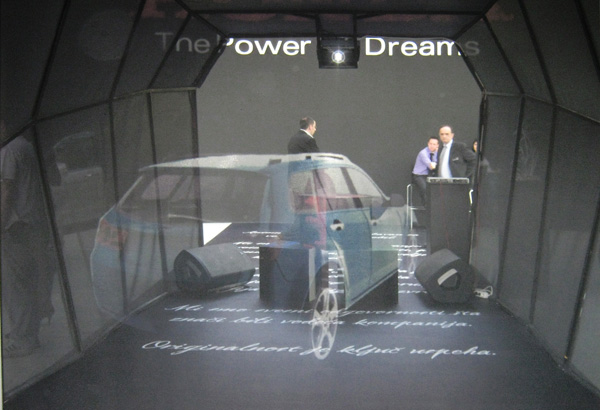
Video Displays are two-dimensional displays that cover a full area, basically a rectangle. The different types of video displays are discussed below
Electroluminescent display is a flat panel display that works on the principle of electroluminescence. Electroluminescence is a phenomenon where materials can emit light in response to the electric current. To make use of this phenomenon, electroluminescent display uses gallium arsenide (GaAs) as an electroluminescent material. The basic structure of electroluminescent display consists of electrode layers at the top and bottom. Active Matrix, Thin Film and Thick Dielectric are the three types of electroluminescent displays.
Advantages
Disadvantages
Electronic Paper also known as e-paper is a term for display technologies resembling a paper. The popularity of the display is due to its contrast, thickness, readability and flexibility.
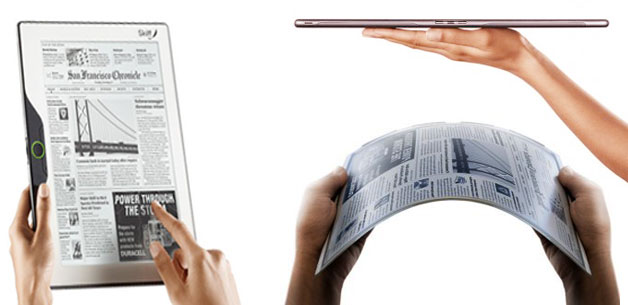
E Ink is now one of the popular e-paper display technologies. It was developed by E Ink Corporation and today they are used by different companies in their products and e-readers. E Ink displays are made of some tiny capsules which consist of black and white particles. With the help of electricity either the black or white particles rise up towards the capsule and thereby change the color of the pixel. Inorder to make an e-ink display, first the ink is printed to a sheet made of plastic which acts as the front plane of the e-ink display. The plastic sheets are thereafter laminated onto the active matrix backplanes forming the e-ink display. To control the pattern of the pixels in the display, controllers and integrated circuits are added.
Advantages
Disadvantages
Gyricon is a type of e-paper display. It was developed by Xerox PARC. The main features of the display are its flexibility, wide angle of view etc. Gyricon sheet is a transparent plastic which consists of many beads that are distributed randomly. When the voltage is applied, beads will rotate to present the colored side to the viewer.
It is a type of display that uses light emitting diodes. This flat panel display is today used in many applications like to display traffic signs, displays of railway stations, television display etc. One of the largest LED display in the world is located in China, which is 500m long. Also the largest LED television is the Center Hung Video Display at Cowboys Stadium. This television has dimensions of 49m x 22m.
This display generally depends upon the light modulating properties of liquid crystals. The low power consumption makes it good to use in all types of electronic equipments that are battery powered. LCDs are electronically modulated and are made of liquid crystals which are arrayed in front of the light source to produce images in color.
TFT LCD displays are another type of LCD display that uses the thin film transistor technology. This display helps to improve the quality of the image, contrast, addressability. Generally, TFT LCD is an active matrix LCD display.
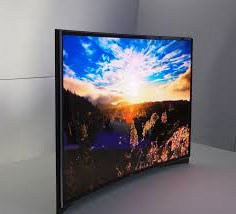
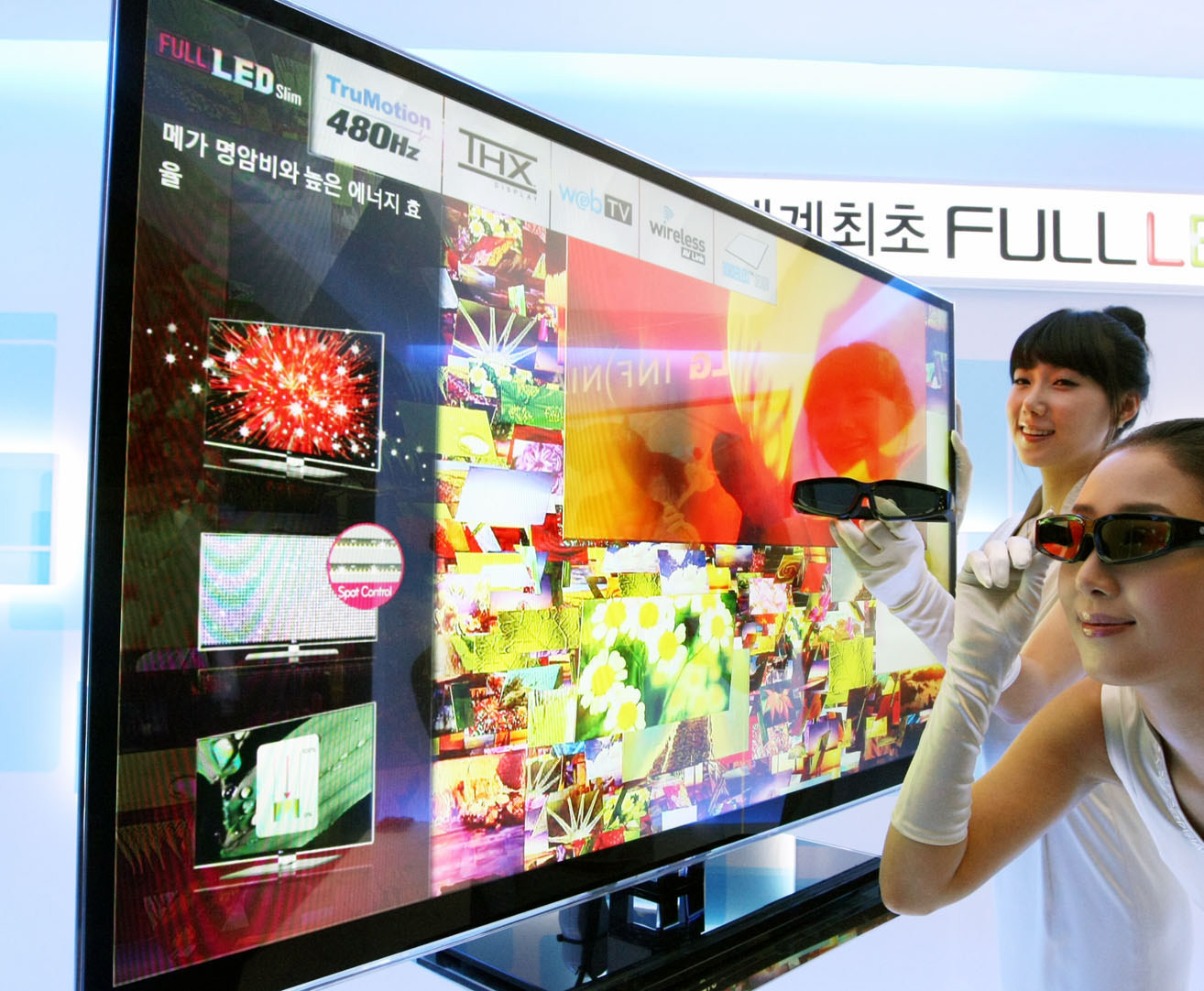
Plasma Displays is one of the display technologies that provides large screen sizes and better flat screen presentation. Good image qualities are one of its characteristic. Basically, plasma screens compose of large number of cells sandwiched between the panels made of glass. Between the glass panels there are display and address electrodes which form the grid. Electrodes intersect at a particular cell will get charged and excites neon and xenon gas within each cell. When the gas gets excited, it creates plasma and releases the UV light and thereafter releases the phosphor electrodes which are located on the sides of the cell. When these electrodes come back to the original state, light is emitted.
Plasma panel displays text or graphics using the light from large number of tiny plasma cells. Each pixel is made up of three sub cells which emit red, green and blue lights for colour display. Plasma display is thinner than its CRT counter parts and wider display panels can be created using plasma technology.
Plasma is an ionized gas containing free-flowing ions and electrons. Under normal condition, gas inside the chamber is neutral. Plasma is created by applying very high voltage across the electrodes on the sides of the gas chamber. Structure of a single plasma cell is shown in the figure.
When a voltage is applied between two electrodes, free electrons are introduced into the gas. These free electrons collide with the electrons in the gas atoms. Electrons will get enough energy to break its bond, therefore, more free electrons and positive ions are created. Electrons then move towards the positive charged area and similarly positive ions move towards the negatively charged area.
Random movements of charged particles increase the rate of collision and therefore, more and more charged particles get released. Each exited electrons after some time go back to the lower energy state by emitting energy in the form of photons.
Xenon and Neon are most commonly used gases to make plasma. When they are excited, photons are created in UV range. Ultraviolet rays are invisible to human eye and therefore they need to be converted into visible spectrum. For which ultraviolet photons are guided to hit a phosphorus layer on the surface of the gas chamber. Incident ultraviolet rays excite phosphorus electrons to a higher energy state. The electron later returns to the ground state and releases energy in the form of photon in visible spectrum.
A large number of tiny plasma cells are arranged in a matrix format. Each cell is addressed by grid structure (rows and columns) of long electrodes which reaches both sides of the cell. When voltage pulse is applied across any two electrodes, gas cell at the intersection electrodes are excited.
Ultraviolet photons in each cell interact with phosphor material coated on the inside wall of the cell to emit photons in the visible spectrum. In a small fraction of a second, thousands of such cells are excited to display a particular graphics on the screen. Since each pixel lights individually, no separate back light is required for plasma display.
Colour Display
In colour display every pixel is made up of three separate sub pixels. Each sub pixels is coated with three different phosphors to emit red, green and blue lights. Colours from each sub pixel blend together to create the overall colour of the pixel.
DLP technology basically uses an optical semiconductor device known as Digital Micromirror Device. This device is a small light switch that can modulate the light through many microscopic mirrors arranged in a rectangular array. By using a DMD, digital video, light source, projection lens and mirrors this DLP system can reflect a digital image to the surface. When the mirrors tilt towards the light source, they are in the ON state otherwise they are OFF. Depending upon the state of the micromirrors, they project light or dark pixels to the screen. A digital signal is used to instruct the micromirror to switch on or off. With the help of this method, the DMD can produce grayscale images.
Inorder to produce color images, a color wheel is placed between the mirror and the light source. When the wheel spins, white light generated will filter into red, green and blue light which then fall onto the mirrors. The coordination of the colored light and switching of the DMD, the DLP system helps to produce colored images. For example, a purple pixel will be produced when the mirror is switched ON when red or blue colored light is produced.
LCoS is a micro display technology that can be used in projection TVs, Eye displays etc. This technology uses a liquid crystal layer on top of the silicon backplane instead of the mirrors used in DLP system. The CMOS chip used will help to control the voltage on the plates, which is situated below the chip controlling the pixels.
This is another popular flat panel display technology. It uses filed emission electron sources. These electron sources will strike the phosphor to produce colored images. Generally, FED consists of CRTs to form the RGB pixels. High contrast ratio, fast response time, less power, better packaging are some of its features.
Laser TV also known as Laser color video display uses laser rays of different colors inorder to produce a spot. The spot is scanned and projected across the image plane. This process is done by using a polygon mirror set up.
Quantum dot display is a type of display technology similar to the OLEDs. Here the light is supplied earlier, so that more efficient displays are obtained. Quantum dots are considered to be electro-active and photo-active which makes them to be a better display technology.
IMOD displays are a particular type of electronic visual displays that helps to create different colors by the interference property of the reflected light. One of the smart watches named Qualcomm Toq uses this type of display. IMOD displays consist of mirrors that can be made into ON or OFF states. Each of these mirrors will reflect only one wavelength of light when turned ON. When the mirrors are in the OFF state, they absorb the light. Generally the mirrors here are arranged in a rectangular array to make up a display screen.
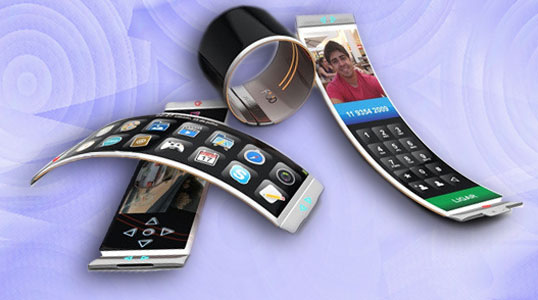
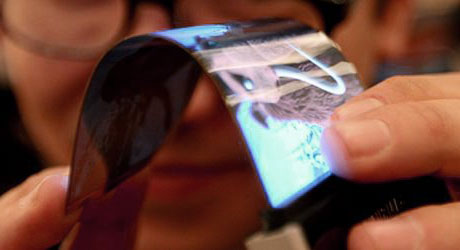
A flexible display is referred to the display of the screen which is actually quite flexible by nature. These sorts of screen are quite different from the usual rigid flat screens that can be explored in the world of electronics today. With the increase in the popularity of these types of screens, many manufactures have intended to include this style of display in mobile phones, e-readers and many more electronical devices that have flat screen. The concept of this technology is derived from the age old flexible electronic paper.
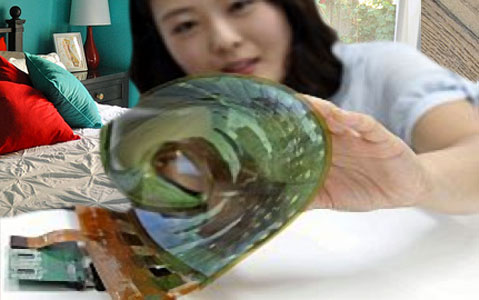
A flexible electronic paper is a paper that is often termed as the e-paper and this paper has the ability to bend and is even structured as the prototype of the current technology. Though, there were several companies who tried formulating this concept with the help of smart skills and competence, but only in the year 2013 the world could discover the first and the most beautiful screen which is flexible and easy to use. This concept was first identified by the Xerox PARC (Palo Alto Research Company) in the year 1947. Scientists like Nicholas K. Sheldon had made major contribution in the development of this screen.
Dubbed Gryicon was the technology that could make flexible display what it is today. This new display technique was designed using e-paper and the dynamic touch of the digital display. Soon, this idea was well structured with the help of Organic thin film transistors. These organic thin film transistors acted as a semiconducting compound that provided adequate amount of mobility to the display. The worked in bringing a brighter and vibrant display on the screen and even increased the response time of the screen.

The Organic semiconductors typically hold low intermolecular force, which means the Vander Waal Force of attraction between them is as low as 10kcal/mol. This means that the bonding that is present between the atoms of the organic thin film transistors are quite low, even lower than the inorganic compounds like Silicon, Gallium, and Germanium that hold quite a strong bonding in between them. So, the low bond value that was present in between the organic compounds, especially in the thin film transistors allowed the display screen to bend without breaking. Since, the intermolecular force is not too strong any type of damage was never caused to the screen.
Every Rollable display is a type of flexible display, but on the contrary every flexible display is not a type of Rollable display. This clearly, means that any display that is flexible does not mean that it can be rolled over too. As a matter of fact, there are only few such display that are flexible and Rollable too. The common Rollable display is almost like a thin piece of paper that can be rolled into any direction, and was developed with the help of E-paper that had E-ink. Currently, there is only one phone by Samsung which is named as Youm, and this phone holds both flexible and Rollable display too.
The phone was enthralled by Samsung in the year 2013, and was crafted as an unnamed product. This was the time, when the brand engineers announced their developments for creating display screen that is both flexible and Rollable but, it can be purchased by everyone at affordable rates. After that, Samsung brought an official name that was Youm to the first curved OLED screen phone that was Rollable and flexible too. This OLED display enhanced the battery life of the phone and soon made the phone a new revolution in the world of Smartphone.

For now, there has been lot of talk in the air about flexible display and the features that they hold. This has definitely increased the anticipation of the people and now they are waiting when they will be able to use such kind of phone, which is based on the smart technology of today. It’s interesting that Samsung has brought a phone that can achieve the same standards of that of OLED with display that is flexible, but it has not yet announced the launch date of this phone.
There are different types of Non- video displays like Vaccum Fluorescent Displays(VFDs), Seven Segment Displays, Dot matrix display etc.
VFDs are commonly used as a display device in video cassettes, ovens, car radios etc. High contrast and better display are its features. They consist of cathodes, anodes and grids enclosed together in a glass envelope under high vacuum.
Seven-segment display is used for the display of decimal numerals. It’s used in clocks, meters, calculators, to display information in numerical form.
Holographic displays, retina displays, fog display are some of the 3d displays famous now.
It is a type of display that makes use of the haze machines to create a semi-transparent wall. The wall consists of suspended particles trapped in a sheet of air which are then illuminated by the projector. The images of this display seem to be floating in air.